#houlton maine
Explore tagged Tumblr posts
Text
It's All Down Hill.
0 notes
Text



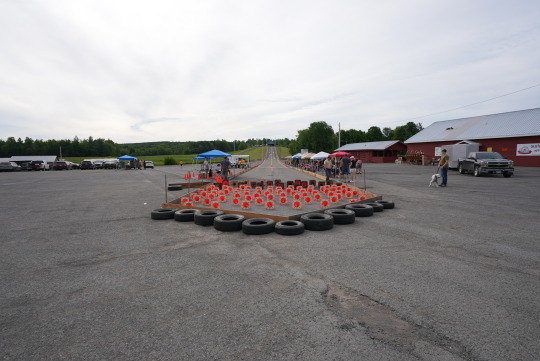


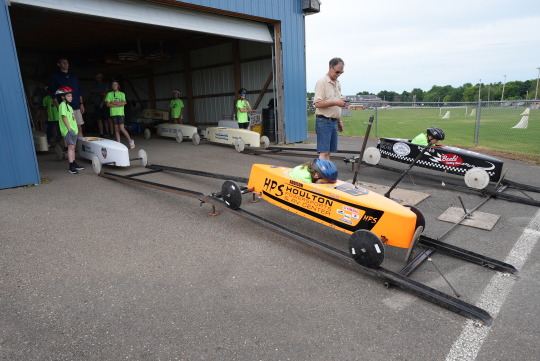
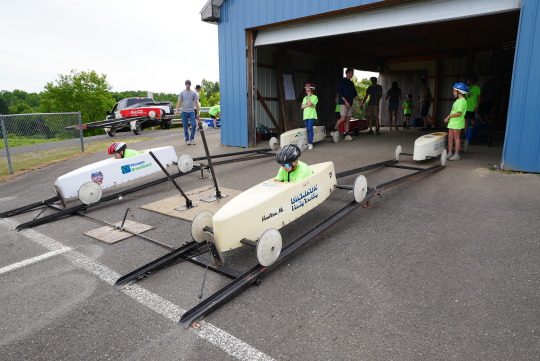



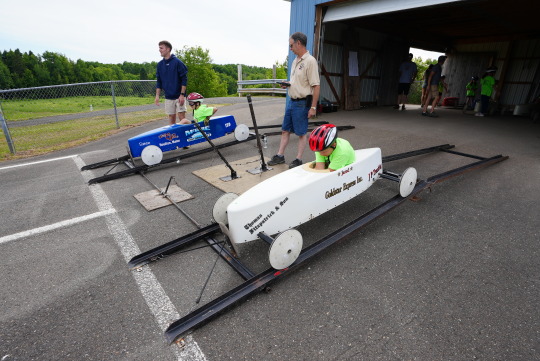

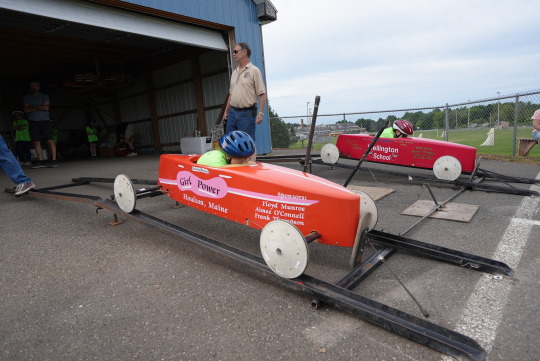
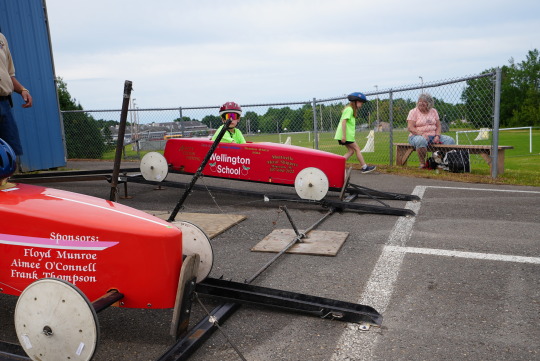
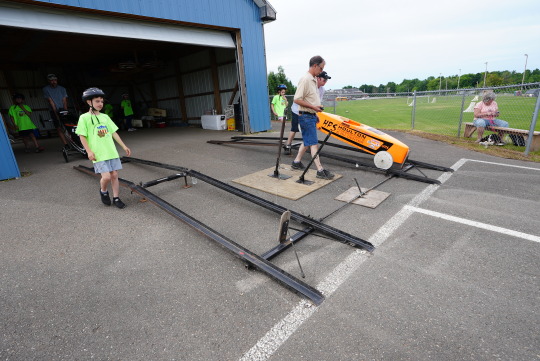




Images From Houlton Maine / State Of Maine 2024 Soap Box Derby. The Big Race June 22nd, Houlton Maine In Aroostook County On "Derby Hill".
#soapboxderby#maine soap box derby races#maine soap box derby race#maine soap box derby racing#houlton maine#aroostook county
0 notes
Text

#photography#artists on tumblr#photographers on tumblr#original photographers#original photography blog#original photography on tumblr#maine#houlton#river#bridge
13 notes
·
View notes
Text

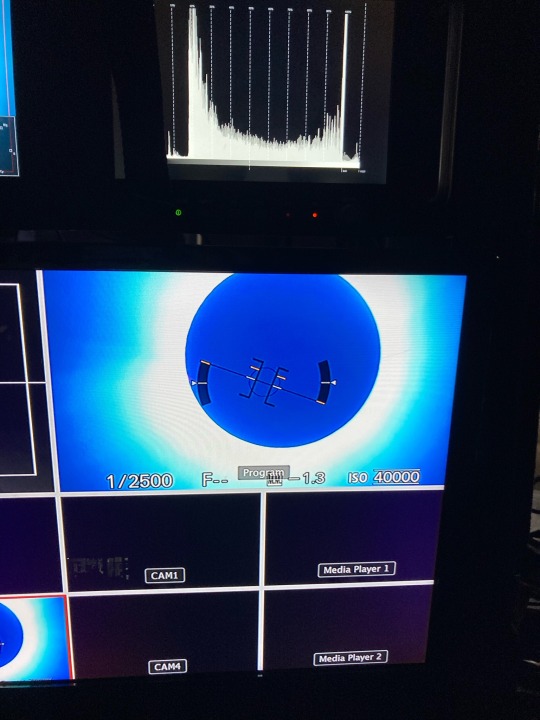


Total eclipse of the heart 🖤
1 note
·
View note
Text
6/24/24: Reflections on Visiting Homeland & Indian Policy
This will be a series of short essays about my experiences visiting CRST (Cheyenne River Sioux Tribe). Edited & posted 7/30/24.

Standing beside the graves of my great-grandparents, William Garreau and his wife On the Lead.
I've just returned from a trip to the Cheyenne River Sioux Tribe (CRST), sovereign Lakota land surrounded by the state of South Dakota. This experience of going to this place where my ancestors lived was humbling, informative, and intense above all.
While I am an enrolled member of the Cheyenne River Lakota, I was born and raised in Maine; In many ways, this is where my heart is. I connect with the woodlands and the river that has been a constant companion to me through all my years. This, though, is not where my blood family or ancestors are from.

The sky here seems to stretch forever. You don't fully understand the enormity of it until you're under its expanse--But despite what you might hear about "prarie madness" in places where the "sky is too big", I felt comforted in knowing that this is where my family and ancestors lived, and continue to live.
Coming from Maine, tribal lands are handled differently. In traveling to a Native community here, you are very nearly assured that everyone living on reservation land is either Native themselves, or integrated into a Native family one way or another (married, adopted, etc). In off-reservation areas, there is still often recognition of the land's Indigenous roots, whether it be through place names or by signage. This is not to give too much credit to colonizers. The Wabanaki community has been steadfast in maintaining their cultural identity and asserting their presence. This is helped by the fact that these are truly ancestral lands; Wabanaki have lived here since time immemorial, and their archaeological record in the area goes back at least 5,000 years.
Indian policy in Maine also fundamentally differs from that out West. In my paper Triumph and Tribulation: Wabanaki Experiences, 1950-2020, I cover MICSA, perhaps the most significant Maine Indian land policy in recent years:
For the Passamaquoddy and Penobscot, their long battle with the State of Maine for land claims would bear fruit in 1980, with the passing of the Maine Indian Claims Settlement Act (MICSA).[1] MICSA was initially deemed a success and was the largest land claims settlement at the time, as well as the first to include provisions for land reacquisition.[2] The Act had tribes cede 12.5 million acres, or 60% of Maine, in exchange for $81.5 million divided between tribes.[3] The Houlton Band of Maliseets joined the settlement in 1979 and were provided with $900,000 for the purchase of a five-thousand-acre reservation, as well as federal recognition.[4] The breakdown of the $81.5 million between the Passamaquoddy and Penobscot was $26.8 million for each tribe, or 150,000 acres in unorganized territories—soft money.[5] The remaining $27 million would be split between the two with one million dollars set aside for infrastructure for elders.[6] MISCA also created the Maine Implementing Act (MIA) and the Maine Indian Tribal-State Commission (MITSC), which would define tribal-state relationships by establishing specific laws about Wabanaki peoples and their lands.[7] This served as a means to define and resolve discrepancies with MICSA, as it was largely considered much more legally rigid than the Wabanaki tribes had initially understood it to be.[8] This rigidity would ultimately be a major critique of MICSA and its associated provisions. There were concerns that MISCA did not respect Wabanaki tribes as sovereign nations but, rather, reduced reservation lands to municipality status.[9] State paternalism toward Indigenous peoples of Maine was effectively allowed to continue. Per-capita payments for MISCA were ultimately very little for many, hardly the windfall gain that many perceived it to be; additionally, many saw acceptance of the payments as agreement to the terms of MICSA, with which not all Wabanaki agreed.[10] Though MICSA was perhaps the first step in a road toward true self-determination, Penobscot, Passamaquoddy, and Maliseet people continued to struggle. Fears surrounding termination still loomed in the minds of many ...
The 1990s would bring the Aroostook Band of Micmacs (or Mi’kmaq, now considered the correct spelling) into the MICSA agreement. Following the 1980 settlement, and with the MIA considered no longer necessary, the Mi’kmaq had been largely left to fend for themselves.[11] Their fellow Wabanaki found it inappropriate to speak on their behalf.[12] In 1991, Congress would seek to correct this oversight: similar to the Maliseet, Mi’kmaq would receive $900,000 for a five thousand acre reservation, federal recognition, as well as $50,000 in additional property funds in dispersed settlements.[13]
However, like many tribes in the West, my oyate were affected by the disastrous Dawes Severalty Act (also known as General Allotment Act) in 1887. In short, this act would give Indians an allotment of land to farm or ranch (regardless of traditional living and subsistence practices). "Surplus" land not allotted was then sold off cheaply to white farmers and ranchers, creating something of a checkerboard affect in Indian country. I talk more about this in reblog discussing the issues of cottagecore on my main blog back in January.
Because of this, Cheyenne River Sioux Tribe land is still inhabited by a minority of white farmers and ranchers. While we had no incidents while picking timpsula, traveling through fields to Thunder Butte, or otherwise exploring and learning, the discomfort my aunties (residents of CRST) felt when encountering white ranchers was palpable.


Digging timpsula at CRST with my thiwahe (family)
Reservation lands have historically been a place where Indians are cloistered away. My grandfather would recall times when there were curfews for when they had to be back (though he would gleefully recall violating this curfew and riding around with friends and getting up to all sorts of car-related hijinks); an extension of US paternalism towards Indians. In earlier times (though not in such a distant past), Indian agents policed and monitored Indian behavior. Nuns and priests evangelized and enforced the ban on Indigenous religious practice. The cultural devastation created by these systems is still felt today. My great auntie, who lived on the reservation, was very Christian until the day she died. Our language continues to be endangered. Efforts to revitalize and maintain our culture are critical and complicated by generations of racial shaming, residential schools, and forced US paternalism that has caused us to become unwilling dependents.
This is one of the biggest recurring themes in Indian policy in the United States. We are set up to fail, and when we do, the US government can swoop in and claim we can’t take care of ourselves.
I don’t mean to engender a sense of hopelessness within this essay, far from it. There is hope. I want to make those outside of Indigenous communities viscerally aware of our struggles and our existence in the current moment. We are here, we are not peoples of the past, and everything is not okay. There is pain, but how we navigate our cultural wounds is a testament to our resilience as a people.
Within the Lakota Nation, there have been a number of programs to preserve and revitalize the culture. The Lakota Cultural Center in Eagle Butte has recently experienced a massive overhaul under the leadership of Dave West, current program director.

Me and Até outside the Lakota Cultural Center in Eagle Butte after getting my tribal ID
We were lucky enough to catch Dave during his work day at the center, and he graciously gave us an extremely in-depth and powerful tour of the museum. What stood out to me during my conversation with him was a re-orientation of cultural knowledge.
The Lakota Cultural Center has been doing important work in facilitating community nights and days were our oyate can come together and share knowledge on more equal footing. Tables and chairs are set up in a circle, so that, as Dave put it, "A six year old child and seventy year old elder can both be heard." Workshops may range from traditional crafts to singing, story-telling, gathering, and language-sharing.

Elk hide prepared by CRST youth.
Community engagement with traditional practices is not only sacred, but helps heal and offers a healthy outlet for pain we may be feeling.
Something I've taken away from my work this summer, and what I intend with this blog is similar to the cultural center's message-- Knowledge sharing. Knowledge is power as much as it is healing. I believe it is critical to share knowledge not only without our own communities, but outside of them as well; To facilitate a conversation between Indigenous communities and our neighbors (all residents of Turtle Island).
I hope to share more about my trip in follow-up posts. This installment has been focused on Indian land policy and cultural revitalization. If you've made it to the end, I want to thank you for taking the time to read and engage. Please feel free to share your thoughts in comments! Respectful conversation around my posts is very encouraged. Have a wonderful day!
Check out my (free) substack!

Citations & References:
[1] Lecture NAS 222, 4/15/24. [2] Girouard, 60. (Girouard, Maria L. 2012. “THE ORIGINAL MEANING AND INTENT OF THE MAINE INDIAN LAND CLAIMS: PENOBSCOT PERSPECTIVES.” Graduate School: University of Maine.) [3] Lecture 4/15/24. [4] Ibid. [5] Ibid. [6] Ibid. [7] Ibid; Girouard, 60. [8] Girouard, 60. [9] Lecture 4/15/24. [10] 4/19/24.
[11] Brimley, Stephen. 2004. “Native American Sovereignty in Maine” Maine Policy Review 13.2 (2004) : 12 -26. http://digitalcommons.library.umaine.edu/mpr/vol13/iss2/4., 22. [12] Ibid. [13] Lecture 4/19/24.
25 notes
·
View notes
Text










Samantha Smith
American peace activist and actress
Also known as: Samantha Reed Smith
Written by
Fact-checked by : The Editors of Encyclopaedia Britannica
Last Updated: Apr 30, 2025 • Article History
Samantha Smith (born June 29, 1972, Houlton, Maine, U.S.—died August 25, 1985, Auburn, Maine) was an American peace activist and child actress, celebrated for giving children around the world a voice in the volatile Cold War during the 1980s.
In December 1982, when she was 10 years old, Smith wrote a letter to the new leader of the Soviet Union, Yury Andropov. Having learned from public television of the apocalyptic potential of the nuclear arms race then escalating under Andropov and U.S. President Ronald Reagan, she asked Andropov to tell her what he would do to avoid a nuclear war with the United States:
Dear Mr. Andropov,
My name is Samantha Smith. I am ten years old. Congratulations on your new job. I have been worrying about Russia and the United States getting into a nuclear war. Are you going to vote to have a war or not? If you aren’t please tell me how you are going to help to not have a war. This question you do not have to answer, but I would like to know why you want to conquer the world or at least our country. God made the world for us to live together in peace and not to fight.
Sincerely,
Samantha Smith
After excerpts of her letter were published in the Soviet newspaper Pravda in April 1983, she wrote to the Soviet ambassador to the United States, Anatoly Dobrynin, to ask why Andropov himself had not replied. Andropov responded with his own letter later that month, acknowledging Smith’s specific question and the terrible nature of nuclear weapons. He cited his nation’s declaration not to use nuclear weapons first against any country. He also complimented her as a courageous and honest girl, resembling the character Becky of Mark Twain’s Huckleberry Finn (1884), and concluded by inviting Smith to come to the Soviet Union.
In July 1983 Smith and her family spent two weeks in the Soviet Union, visiting Moscow, Leningrad, and Artek, a children’s camp on the Black Sea. After returning home, she gave numerous television interviews and, with her father’s help, wrote a book about her experience, Journey to the Soviet Union (1985). In a December 1983 speech at the International Children’s Symposium in Kōbe, Japan, she suggested that U.S. and Soviet leaders exchange granddaughters for two weeks every year, because a leader would not want to bomb a country that “his granddaughter was visiting.”
In February 1984 she hosted a television special, Samantha Smith Goes to Washington: Campaign ’84, in which she interviewed various political leaders about the issues in the campaign. Later that year she appeared as a guest star in an episode of the television series Charles in Charge, and in 1985 she began appearing in a new television series, Lime Street, in a regular supporting role.
In August 1985, while returning to Maine from London, where she had filmed a segment of Lime Street, Smith and her father were killed in a commuter plane crash. The Soviet government issued a postage stamp with her likeness and named a diamond and an asteroid in her honour. The state of Maine erected a life-size statue of Smith releasing a dove with a small bear (representing both Maine and the Soviet Union) sitting at her feet and proclaimed the first Monday in June to be Samantha Smith Day. In October 1985 her mother established the Samantha Smith Foundation, dedicated to peace education and fostering international friendships among children.
3 notes
·
View notes
Note
since you're living in Maine now, any plans to go up to one of the Maine towns where you can see the total eclipse in April? Houlton's the main maine one, but there's some smaller towns more out in the timber lands that'll also be solid choice. also grats on leaving texas
My mom gave me extra glasses for it hopefully the weather let's us
14 notes
·
View notes
Text









Winning Stock And Super Stock Soap Box Derby Cars Ready To Ship To Akron Ohio! Houlton Maine, District 10 Race Is The One Venue To Race In Maine.
0 notes
Text



#photography#artists on tumblr#photographers on tumblr#original photographers#original photography blog#original photography on tumblr#bridge#houlton#maine#park
8 notes
·
View notes
Text
Looking for trans woman nearby houlton Maine
#trans cock#trans women are amazing#trans women are beautiful#trans love#tgirl#tran#trans princess#trangender
3 notes
·
View notes
Text
Posts so far....
I have now posted approximately 27,000 scans. That's about half of the collection. I also have 8 magazines to scan, and 7 sitting in escrow in Houlton, Maine. It never stops!
#vintage wedding gowns#original scans#vintage bride#wedding dress#wedding gown#bridal gown#bridal fashion#свадебное платье#vestido de novia#robe de mariée#ウェディングドレス#Hochzeitskleid#शादी का कपड़ा#فستان الزف#لباس ��روسی
2 notes
·
View notes
Text

⟨Seth Rollins. cis male. he/they. 37.⟩ We just saw Ansel Briar entering L’Antique C’est Chic. I heard through the grapevine that their loyalties lie with the Jolly Rogers and that they also go by the King of Hearts. Be careful, they work for them as an assassin and can sometimes be bored by repetition, jealous, petty, or even bloodthirsty but I’ve also heard some people say that they were dedicated, confident and quite stylish.— Moss. they/them. 23. EST. violence against children (< 10)
AESTHETIC | MUSIC | LONDON FALLING RPG
STATS
Real name: Ansel Ford Briar
Code name: King of Hearts
Alliance: Jolly Rogers
Job: Contract Assassin. (Works part time coaching at Crossfit North London, esp in conditioning. Bit of a reputation for being intense, but that’s the point, right?)
Age: 37
Physical: 6'1", 225 lbs
Birthplace: Houlton, Maine, US
DOB: August 10, 1986
Star sign: Leo
Gender: Male-adjacent (he/they)
Sexuality: Bisexual disaster
FC: Seth Rollins
Family: Dan Briar (Father), Evelyn Summers-Briar (Mother), Four Siblings (I'll name 'em someday), Rebecca Briar (formerly Ballagh, Ex-Wife)
BIOGRAPHY
Ansel’s from the sticks. His father was a hunter first and owner of the local general store second, born and raised in the woods of northern Maine, where his mother settled there later with a group of poets and artists who were inspired by the quiet snowy mountains and the way the sun shines through the leaves. Those same mountains meant she had to be driven nearly two hours in the family’s beater red pickup to the nearest hospital to bring him and his younger siblings into the world. All of them were hard on her, but that didn’t stop them from having five kids.
His mother called him Ansel, after Ansel Adams. His dad said that was some pretentious bullshit and always called him Andy, or the leader of the pack, so Ansel did his best to step up and be the best role model he could. He started following his father out hunting when he was five, and maybe they should’ve started worrying when he took to it so quickly. Maybe Ansel had a couple too many questions about how to balance wearing camo to blend in with bright, flashy hunter oranges and yellows, but was happy enough to sit still and quiet, listening for a broken twig or rustling leaves, and he never cried when his dad showed how they’d have to slit a buck’s throat to kill it quickly if the first shot didn’t get it done. Ansel killed his first deer at 8 without his dad holding the rifle steady, skinned it a little too quickly and held onto the antlers as a trophy as long as he could.
Ansel went to a university in Boston, and both reveled in finally being a small fish in a much bigger pond, and itched for attention. He studied literature to keep his mother happy, spent hours hitting the gym to look more impressive than he was and make up for the lack of mountains to climb, and made the rounds through anyone looking for a messy one-night stand.
But then met Rebecca Ballagh in some 300 level poetry class he suddenly had to pretend he cared about. She was something special, had enough of a dangerous edge that Ansel couldn’t get bored of her if he tried. He met her family at a shooting range outside the city after dating for about a year, and they offered to put him up and give him a job if he wanted to stay in Boston. It took him a little too long to realize her family were the last, quiet dregs of the Winter Hill Gang and US-based IRA that were slowly building themselves back up, but hey, the one thing he’d missed about home was hunting.
A person ain’t too different from a deer, to a wolf. Everything bleeds the same.
But now that he ran with a pack again, it came with new rules. Clean up, cut your hair, kid. Pipe down. Dress like everyone else. Wear black. Shut the fuck up and become a ghost. Becca helped when she could, but she liked him better this way too. Colder, a soldier. They got married in 1998, and Ansel didn’t quite look like himself in the pictures.
He tried as hard as he could to just focus on blending in- you don’t wear camo without orange, you’ll get shot- but the longer he stayed, the whole gang made his skin crawl. Every hit was scripted down to the second, and if he deviated from it in the moment to keep himself alive and useful he got beat down and hung out to dry in front of the rest of the gang. He started spending more time at their local crossfit box than with his wife. At least something was intensive enough to make him feel something. But even that after a while started to feel monotonous. The same fights with the family. The same rotation of classes and workouts and late night jobs. The same accusations that he was having an affair with his trainer. Always the fucking same. Boredom sunk its claws into him, but breaking routine only shortened his leash.
They slowly fell apart over seven years, until Becca served him their divorce papers in 2004. Maybe he bitterly sent an anonymous tip to the local PD about the plans for the family’s next few moves the day before they had to appear in court. Served them right, Ansel thought. At least until cops had barricaded the entrance to his new studio apartment he just finished moving into a week later, saying that they’d been given anonymous information that warranted arrest and trial.
He didn’t know who else to call except one of the gang’s lawyers, who came in all smug smiles and talked him through exactly what had been given to the cops like he’d written up the list. With the given evidence, he would have done life in prison and paid thousands of dollars in fines on top of legal fees. But by already coming back to them? The gang could put in some work, get it down to a lot of hearsay and a manslaughter charge on one of the hits that Ansel had really fucked up. The angle was clear, and the gang were convinced that by getting it down to ONLY 15 years in a State Prison, he’d have to come crawling back to them on his knees. He walked free in 2019, finally sick of sick of sewing orange and camo, but with enough scattered online classes for a quasi fashion degree and a developed enough collection that he could apply and get his visa to work a brutal, grunt seamstress job at Burberry, and get the fuck away from Boston before he could even be approached by his former pack.
Being American and an ex-convict did him very little favors and that job was falling through before he knew it, but he had found a couple crossfit boxes along the way, and did his best to fight off the bone-deep itch to draw blood other than pricking his own fingers, and take sharpened fabric scissors to someone’s flesh. The wolf was almost free of his chains, screaming to be fed so he could be truly free and then suddenly he’d killed his landlord after Burberry fired him and Ansel couldn’t quite scratch together rent. A vague shape of a heart carved into the side of his neck with a kitchen knife just so he could watch it bleed. Instinct took over, and he covered his ass, watched the press run wild, and was quickly approached by a different sort of pack. Not a family, like Winter hill, but a crew. The Jolly Rodgers.
4 notes
·
View notes
Text
Leading Phlebotomy Courses in Maine: Launch Your Healthcare Career Today!
Top Phlebotomy Courses in Maine: Launch Your Healthcare Career Today!
Are you considering a career in the healthcare field? Phlebotomy is one of the most rewarding and in-demand roles you can pursue. With the growing need for skilled phlebotomists in Maine, now is the perfect time to explore the top phlebotomy courses available in the state.In this article, we will provide you with an overview of the best phlebotomy courses in Maine, outline the benefits of becoming a phlebotomist, and share practical tips for starting your journey.
Why choose phlebotomy?
Phlebotomy is the practice of drawing blood from patients for various medical purposes, such as tests, donations, or transfusions. A career in phlebotomy comes with numerous benefits that can not only enhance your professional life but also your personal satisfaction.
high Demand: The healthcare industry is continuously hiring phlebotomists, providing job security.
Short Training period: Many phlebotomy courses can be completed in just a few months.
Flexible Hours: Phlebotomists often work in varying shifts, allowing for personal time flexibility.
Helping People: Phlebotomists play a crucial role in patient care and diagnostics.
top Phlebotomy Courses in Maine
Here’s a list of some of the best phlebotomy training programs available in Maine:
Course Provider
Location
Duration
Certification
Central Maine Community college
Auburn
12 Weeks
National Certification
Southern maine Community College
South Portland
6 Weeks
State Certification
University of New England
Portland
8 Weeks
National Certification
Empire Beauty School
Waterville
10 Weeks
Certificate of Completion
Northwestern Technical College
Houlton
7 Weeks
Certification Exam Prep
1. central Maine Community College
The phlebotomy program at central Maine Community college in Auburn trains students in essential skills and techniques required for blood collection. This comprehensive course takes about 12 weeks to complete and offers hands-on training, ensuring that graduates are fully prepared for the workforce.
2. Southern Maine Community College
Located in South portland, southern Maine Community College’s 6-week course is ideal for those looking for a rapid entry into the field. This intensive program covers the fundamentals of phlebotomy and includes both theory and practical experience.
3. University of New England
The University of New England in Portland offers an 8-week phlebotomy program that equips students with both technical skills and knowledge of the healthcare habitat, preparing them for national certification examinations.
4. Empire Beauty School
Empire Beauty School, located in Waterville, offers a 10-week course that blends phlebotomy training with a focus on patient care and customer service in healthcare settings.
5. Northwestern Technical College
Houlton’s Northwestern Technical College provides an accelerated 7-week program that focuses on essential skills for blood draws and certification exam readiness, making it a great option for busy individuals.
Benefits of Becoming a Phlebotomist
In addition to the solid job outlook in Maine,here are several key benefits of pursuing a phlebotomy profession:
affordability of Training: Many programs offer financial aid options,making education accessible.
Opportunities for Advancement: Experience as a phlebotomist can lead to careers in other medical fields.
Networking Opportunities: Engage with a variety of professionals in medical settings.
Comfort in Patient Interaction: Gain valuable experience interacting with patients in healthcare situations.
Practical tips for Aspiring Phlebotomists
As you embark on your journey to becoming a certified phlebotomist, consider these practical tips:
Research Programs: Compare course content, length, and costs of different programs.
Hands-On Practice: Ensure your program includes sufficient hands-on training.
Certification preparation: Evaluate and choose a program that helps prepare you for certification exams.
Stay Updated: Keep abreast of advancements in phlebotomy and healthcare.
Real-Life Experiences from Phlebotomists
Many phlebotomists share their passion for helping others. Such as,Sarah,a phlebotomist from Auburn,states:
“I love being a phlebotomist as I get to make a difference in patients’ lives every day. It’s rewarding to no that I am contributing to their healthcare journey and helping doctors diagnose and treat conditions effectively.”
These sentiments are echoed by many professionals in the field, emphasizing the positive impact of the role in healthcare settings.
Conclusion
Embarking on a career in phlebotomy not only offers job security in Maine’s growing healthcare industry but also provides personal fulfillment through helping others. With a variety of top-notch phlebotomy courses available, you can find the right program that fits your needs. Don’t wait-launch your healthcare career in phlebotomy today! By taking the frist step and enrolling in one of Maine’s top phlebotomy programs, you will be well on your way to making a meaningful impact in the lives of many.
youtube
https://phlebotomyschoolsonline.org/leading-phlebotomy-courses-in-maine-launch-your-healthcare-career-today/
0 notes


